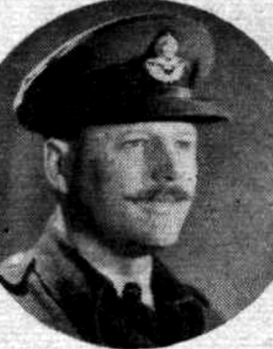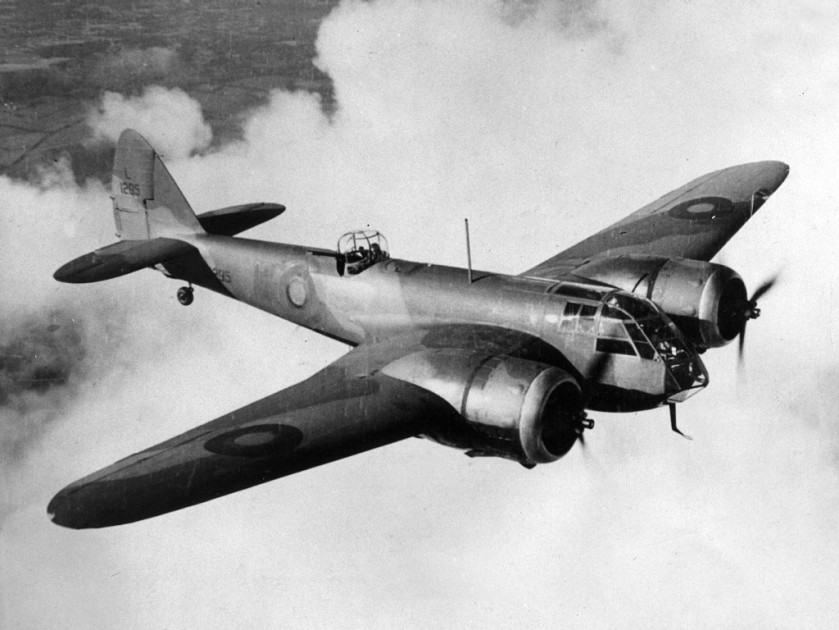
One morning in late-October 1941, Tom & his Crew were, as usual, assessing the Bomb Trolleys as they went past. Tom recalls: ‘The Bombs were semi-Armour-Piercing. But a little while later, they all came back! They went back down to the Bomb Dump. Well, that’s funny! They can’t have scrubbed Operations – they wouldn’t do that! So we couldn’t make out what was happening. Then we were told that the Station Commander wanted to see us all at 14.00hrs at Station Headquarters. It was 18-Squadron‘s turn for the dreaded Malta Detachment.
We went down there & he said: “Well, Chaps, you’re going to Malta, on Monday! Now, what we are going to do is, we’re going to put a Fuel Tank in your Bomb Bay, & a number of Spares & you’re going to take a Mechanic with you & you’ve got to go up to 10,000-ft. When you’ve used so many Gallons out of your Main Tanks, you’ve got to Pump – or the Mechanic with you, whose wanted as a Replacement out there anyway – has got to Pump the Petrol out of this thing, with a Hand Pump, into your Wing Tanks. Now, you’ve all got to make sure you know how you’re Operating your Wing Tanks when the Petrol is coming from this Outside source & all this.”
This modification had to be done in a couple of hours – they worked all Night on it. Then we had to go up and Test it. So, on Monday, we went down to RAF Portreath.’ (Cornwall)
Off tape, Tom informed me how it was decided who would take the Squadron out to Malta. The 2-Flight Commanders, Pete Channer & Tom simply tossed a coin & Pete won! So Tom found himself in the Hot Seat!
The Transit was Hairy in its own right especially the Leg from RAF Portreath to Gibraltar: ‘We had a special briefing, that if anything went wrong & we Landed up in Spain, we were to Destroy the Aircraft by using the Fire Axe & putting a Verey Pistol Cartridge into it. But, if we Landed in Portugal, under no circumstances were we to Destroy the Aircraft, but we were to try to get it down as near as possible in 1-Piece. Apparently, there was a nice Gentleman’s Agreement, that for a nominal £5, the Portuguese Air Force could buy a Blenheim in Exchange for returning the Aircrew without any questions asked! The Aircraft was Loaded up inside with all its Equipment: the Bomb-racks, Containers, Boxes, all sorts of Servicing equipment, Tarpaulins, you name it, Engine Covers, Boxes of Tools – so it was really quite Heavy. Because of this Route, there was an additional 100-gal Tank, just like a great big Lorry Tank, which indeed it was. You’re not going to believe this but it was put inside the Fuselage & had a hand-operated Wobble Pump, to Operate. As soon as Fuel was burnt out of the Main (Inner) Tanks, Fuel was transferred as soon as was humanly possible. It took 100’s & 100’s of Pump Strokes. One virtually sat on this Tank of Petrol & I can remember that it was dripping out of the Gland of the Pump as we went along: into the Aircraft, around your Feet & everywhere else.’
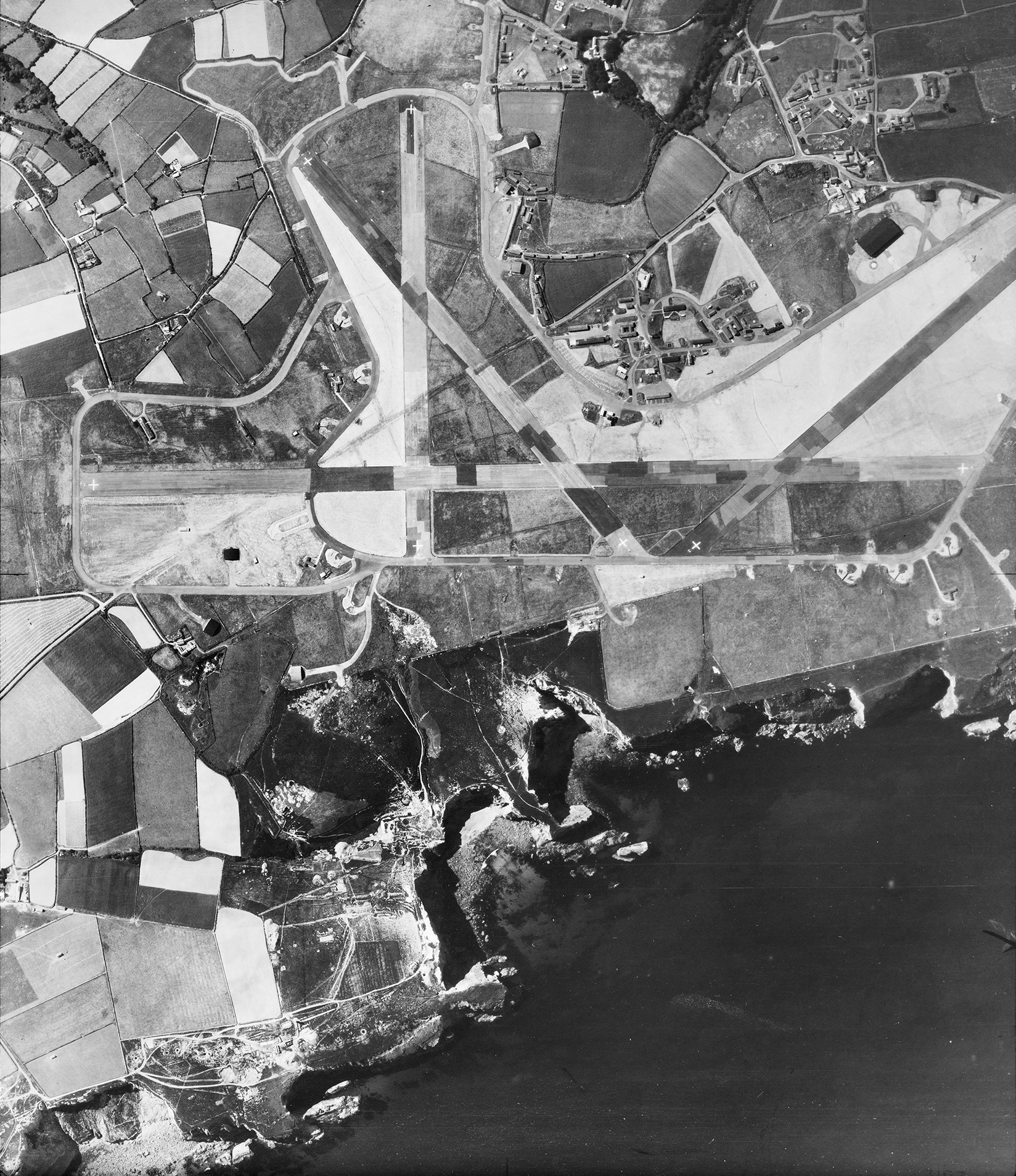
Called RAF Portreath, the Base was Built during 1940, Opened in March 1941 & had a varied Career during WW2, initially as a Fighter Command Station, from October 1941 as a ‘Ferry stop-over‘ for Aircraft Bound to/from North Africa & the Middle East. Portreath was unusual in having straightaway 4-Tarmac-surface Hard Runways, with double-Blast Pens dispersed around the Perimeter Track. After Wartime Development, it eventually had 4 x T2 & 4 x Blister Hangars. Used by the RAF during 1941-45 as a Fighter, Ferry, Maritime & Air-Sea Rescue Base.
On 20th October 1941, Tom was positioned at RAF Portreath, in Cornwall – the Departure Point for the long haul to Gibraltar. Just after Touchdown, a voice came over the R/T: ‘B-B-B-Bloody awful Landing, Jefferson!’ It was the unmistakable Stutter of Tom’s friend, Johnnie Monroe. ‘So, we went out & had a few Drinks’, Tom added. He explained the Set-up at Portreath:
‘We were living in Bell Tents, on the Aerodrome. The Scheme was that every morning, you got up & went to the Briefing at 06.00-Hrs. If you’d got a 30-mph Wind on your Quarter, you were off! If you hadn’t, you just couldn’t get to Gibraltar! So, this went on for 2/3 Days, with Met saying, no chance! Then one night, Johnnie Monroe said: “Come on – we’re going on a Pub Crawl! We’re going to Redruth“ & I forget where else & all Johnnie’s favourite Pubs. He assured me that he had spoken to the Met Office & that there was no chance whatsoever of having a favourable Wind in the morning. So, several of us all went out – on this great big Pub Crawl, all around Cornwall. Jolly good! Got back to the Mess. We played Snooker & drank Pints of Pimms after a bellyful of Beer! When the Barman couldn’t stay up any longer, he left the Bottle. Instead of having them filled up with lemonade, we were pouring neat Pimms into our Pint Mugs! I’ll tell you what, trying to play Snooker – I couldn’t see which Ball was which! Nor could anybody else! I thought, well, never mind I’ll have all day tomorrow to recover. So I went & found my Tent, got into Bed & got called the next morning. I thought, right, I’ll slip along to Briefing & be back here in about 15-mins. Then I’ll see what I can do about getting rid of the most Diabolical Hangover – the worst I’ve ever had. So I went along to Briefing & of course, you can guess what’s coming! The Met Officer said, “Good news Chaps – the Wind’s just right – you’re off!” I thought, Oh God, I could only just Stand!
Before joining Tom on his Epic Portreath to Gibraltar Sortie, we might spare a thought for modern Flight Planning. Nowadays, you need enough Fuel to get to your Destination, then enough to take you to your Diversion Airfield, if required, plus a further 10% Contingency Fuel. Woe betide any Pilot who fails to follow these Rules! But this was Wartime. More often than not, all that was left in the Tanks when turning Finals at Gibraltar or Malta was Vapour. Unlucky Pilots did not even have that & would have to Ditch. As for Diversion Airfields (if a Pilot realised that he was not going to make Gibraltar there was a choice between neutral Spain (Loss of Aircraft & difficulty leaving the Country) & much more friendly Portugal – ‘our oldest Ally’ – who nevertheless would be grateful for the ‘Gift’ of a Blenheim! At Malta, there were no Weather Diversions, just 1 or 2-Airfields that could be used if the Runways at Luqa were Blocked. Finally, when were Performance Charts introduced, to check, amongst many other things, if your Airfield had sufficient Take-off Distance available – especially when your Aircraft was Loaded to the Gunwales?
Chris Ashworth, writing in Action Stations 5: Military Airfields of the South-West (Patrick Stephens, London, 1982) states: ‘The Main Runway at RAF Portreath, Runway 27 – 5,480-ft] was only just long enough for a Heavily Loaded Blenheim & many heart-stopping Take-offs were made, the Aircraft disappearing over the Cliffs to Reappear, seemingly minutes later, struggling for height over the Sea.’ I shudder to think that most, if not all, Departures during the War were based on suck-it-&-see or a feeling in one’s Water! Which leads me nicely to one of Tom’s pre-take-off vital Actions. Before every single Flight, especially on Operations or very long transit Sorties, Tom would urinate on the Tailwheel! (For much-needed Luck). Though this Practice was clearly unpopular with the Groundcrew, who can doubt the efficacy of this action when Pilots returned safely to Base? ‘He never missed!’, Scotty asserted. I believe that he was referring to frequency, rather than Aim! Tom added: ‘Do you know, Group Headquarters had to bring out an Order to try & stop it, because the Engineering Branch were all complaining about Tailwheels Corroding!’
So, Tom found himself at the end of Runway 27, at Portreath, on 23rd October 1941, with blood in his alcohol stream, a severe Hangover, dog-Tired & wondering if he would be able to Rotate before the Runway disappeared! Here are his recollections:
‘Well, we were Laden right up. I Revved up, holding it on the Brakes & took off & fell over the Cliff. To get enough Flying speed, I had to dive down towards the Sea. But we set off & by the Grace of God, we got to Gibraltar.’
Awaiting him, was one of the most unpredictable Airfields on the Planet. The adjacency of the Rock can cause strong Headwinds to become equally strong Tailwinds in Seconds! In fact, in the modern RAF & probably Civil Aviation, you are not allowed to go there unless you have been before! I managed to circumvent this Obstacle, on 12th September 1969, when I took a Canberra T4 from RRE Pershore to Gibraltar. My Wing Commander Flying, Wg Cdr John Phillips, who had been to Gib before, kindly offered to come along as my Co-Pilot! The Leg from St Mawgan to Gibraltar was just 2-hrs & 50-mins & the prevailing conditions were quite docile! I also had stacks of spare Fuel & a huge Metal Runway to Land on – not a small Grass Racecourse!
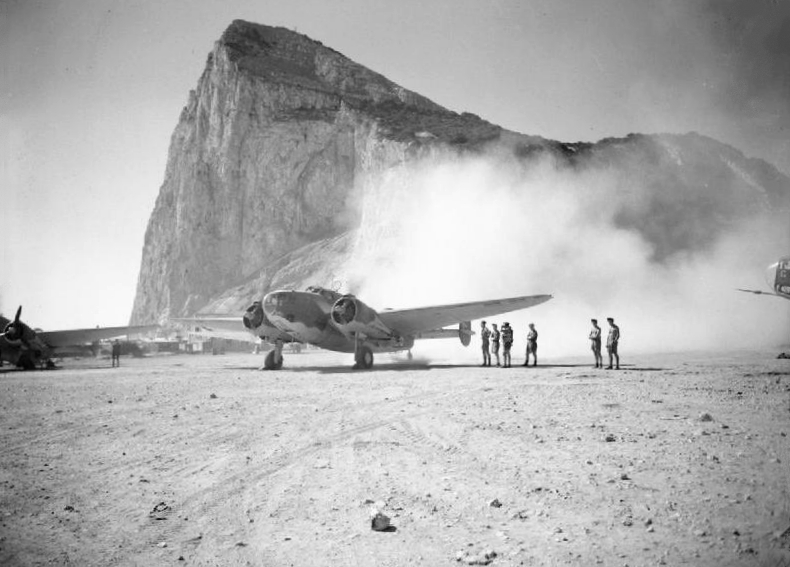
Contrast this with Tom’s Arrival on Gibralter & conditions in October 1941, as he recalls:
‘That was Dicey, because when we got there, oh, for 10-mins, the Fuel Gauges had been on Zero – not a thing. People were calling up “Ditching, Ditching“, & all the rest of it. I went around the 1,396-ft high Rock & saw the position of the Windsock. The Wind was coming from that Direction. So I thought, right, go out there, do a great big Turn & come into Land. The Bloody Wind had changed right round. Now, it was really treacherous there & this so-called Aerodrome was really a former Grass Racecourse, between Spain & the Face of the high end of the Rock. This was Dicey – the Wind had changed right round & there was no way – I hadn’t got any Fuel at all – that I could have gone around again. It wasn’t blowing all that strong. Anyway, I managed to Land, after a total of 7hrs-15mins though I had to swing it around, to avoid going into the Sea at the other end. This was all right except that it just Tipped up & Bent the Props.’
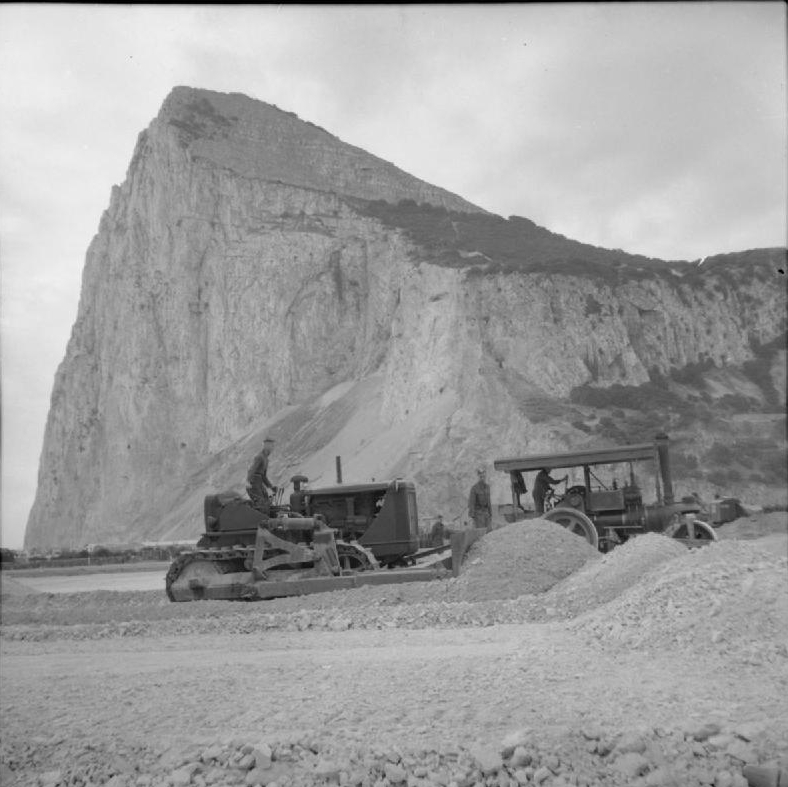
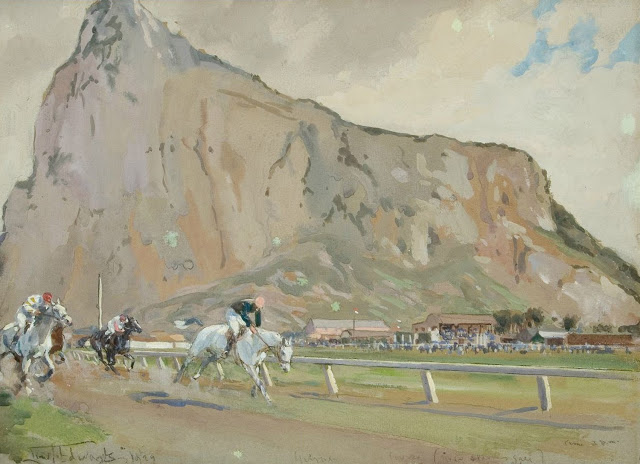
. . . the Race-course, extending on either side of the Road to San Roque & about 2-miles from Gibraltar, in the neighbourhood of Carteia – was a circular one of 2-miles, containing 4-hurdles 4-ft high, 2-ditches between 10/12-ft wide – a Stone Wall of 4-ft and some 4/5-Fences in Crossing the Gardens near Campo.

Scotty remembers the Incident well: Some Chap came roaring up on a Motor-cycle, and said to Jeff [Tom]: “Press your Bloody Buttons, you Fool – your Port Engine’s on Fire!“ Which it was! The funny part was, that when Jeff got out, this Chap was a Squadron Leader, being all Authoritarian you see; when Old Jeff got out – I think he was a Squadron Leader at the time [correct] – & he was telling Jeff how to Suck Eggs really! We had a couple of Buttons on the Blenheim which Extinguished Fires, and he’d already done that.’
Tom recalls: ‘I had a little do with some Cocky little Squadron Leader, who came out. I happened to have just become a Squadron Leader! So I put him in his place, he didn’t know who I was! People used to Gamble there, on how many would get in & so on. There was a great Pile of Aircraft, at the side of the so-called Aerodrome. They used to have Bulldozers. When Aircraft came in & didn’t make it, what was left of them was all Scraped to one side, so the next Bloke coming in had got a Space to Land.’

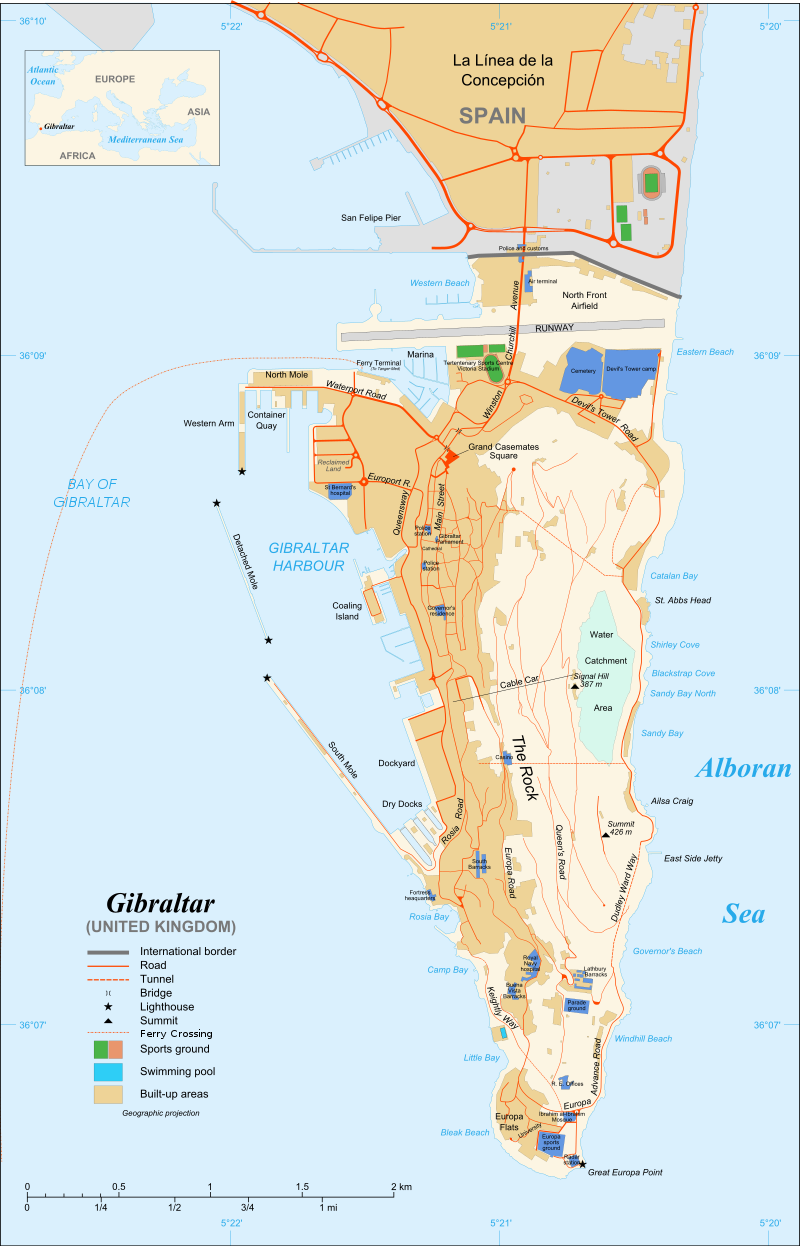
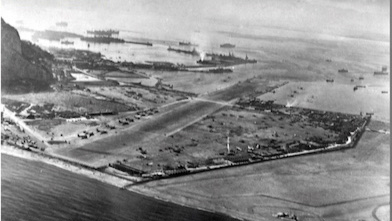
It took 7hrs-15mins to get down there to Gibraltar; & from Memory, despite this Extra Fuel Tank, there was precious little Fuel wafting in the bottom when we Landed. It was 2400-ft from Seawall to Seawall; & to make matters worse, there was a nasty Hummock in the Middle of the Runway, so that when you touched down it gave every impression that you were fresh out of Runway within the next 150ft. This was Terrifying & caused a lot of people to cut their Losses & Swing off one side or another, or Lift the Undercarriage. This caused Mayhem, especially as the Aircraft were Parked on either side of the Runway: there was nowhere else to put them. It could cause quite a Holocaust if someone made a Boo-Boo!‘
Construction of a solid surface Runway began in late-1939 & Land Reclamation commenced towards the end of 1941 along with the Construction of the RAF Camp at North Front. Following the Declaration of War with Germany in September 1939 it was identified that there was a strong possibility of German Submarines concentrating in the Straits of Gibraltar & using Spanish Port Facilities. At the end of November 1941, it was decided that the Runway should be extended Seaward to give an increased Total Length of 4650-ft. Construction Teams were brought from the UK & Stone was blasted from the North Face of the Rock & dumped into the Sea along with Limestone taken from Tunnel Construction at a Rate of 7,500-tons per day. Inside the Rock of Gibraltar itself, Miles of Tunnels were excavated from the Limestone. Masses of Rock were Blasted out to Build an “Underground City“. In huge man-made Caverns, Barracks, Offices & a fully equipped Hospital were Constructed, complete with an Operating Theatre & X-ray Equipment. The Runway was ready for use to its Full Length in July 1943 but towards the end of that year Operations in Gibraltar began to dwindle. However, there was no reduction in Transit Aircraft. In 1955 the Runway was extended to its Current Length of 6000-ft.

Another Wellington Takes off past the Rock.
To earn the description ‘He was a Character‘ meant that person had to perform a Succession of Outrageous Acts. In No.2-Group & more Specifically at Horsham St Faith, most Serving Officers would have been acquainted with the Antics of Wing Commander L V E ‘Attie’ Atkinson, (82 & 21 Squadrons) & Sqn Ldr Johnnie Monroe. I 1st heard of Attie via Tim Partridge’s Widow, Mary, who spoke of her great friend in glowing terms. Here are Tom’s recollections:
Attie & Johnnie Monroe used to do the most Diabolical things. They always had 2/3 Uniforms, because they kept Trading their Rings – they were Wing Commander, Squadron Leader, Flight Lieutenant, Flying Officer & Pilot Officer – up & down all the time! They put up Blacks! It has to be said that they were terrific Blokes at Operating, particularly when they were sent out to the Middle East. But outside of that, they did all the most Diabolical & Ridiculous things, as far as the Services were concerned. For example, I stayed in The Rock Hotel, Gibraltar, at the same time when they were there. At that time – I’ve stayed there since & it’s now been altered – there was a large Lounge, with tall Corinthian Pillars all around & big Easy Chairs, like a very good London Club. There were Admirals, Air Commodores & other such people sitting there, reading the Financial Times & no one dares whisper or anything. Well, Attie & Johnnie Monroe went in one Night, after a Great Session. They pinched a Bike, & they Rode the Bike around, ringing its Bell, with Johnnie on Attie’s shoulders. With Cigarette Lighters, they were setting these very Senior Officers’ Papers on Fire! So, of course, they were right on the Carpet & everyone tried to find some Tiny Island in the Middle of the Pacific that they could be sent to! They were Demoted to Flying Officer & after they had done some Gallant Trips, they were back up to Squadron Leader again in no time!’ The latter Promotion was Enforced, but the other was Optional, so who could possibly know what their true Ranks were at any one time?
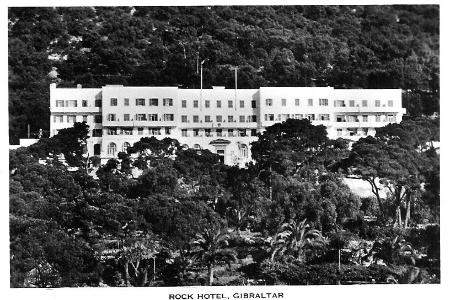
The Rock Hotel was Built by John Crichton-Stuart, the Marquis of Bute in 1932 Like the Raffles Hotel in Singapore, The Rock has been a Magnet for Royalty & the Rich & Famous. As well as Sir Winston Churchill, Errol Flynn, Alec Guinness, Montgomery & Eisenhower. The History of The Rock Hotel is part of the History of Gibraltar itself.
Tom’s Blenheim was on the Ground for 3-days. This was probably due to the inevitable wait for a favourable Wind or New Props, but it was a Godsend to the Ground Crew, as Scotty recalls ‘Do you know what they did? They had no Spares or anything, so they Hammered out & straightened out the Tips of our Propellers & that’s the same Aircraft we Flew on to Malta!’
In late-May 1943, General Władysław Sikorski went to Inspect the Polish Forces Stationed in the Middle East. He was raising the Morale of the Polish Troops there. He was also occupied with Political matters; around that time, a conflict was growing between him & General Władysław Anders. The main reason for this was that Sikorski was still open to some Normalisation of Polish-Soviet Relations, to which Anders vehemently Objected. On 4th July 1943, while returning from the Middle East, Sikorski perished, together with his daughter, his Chief of Staff, Tadeusz Klimecki & 7-others, when his Aircraft, a Consolidated Liberator II, Serial No. AL523 Crashed into the Sea 16-secs after take-off from Gibraltar Airport at 23:07-hrs. The Pilot was the Sole Survivor.
Gibraltar was rightly seen by the British in WW2 as one of the 3-Keys to the Mediterranean & thus the Prosecution of the War against Italy after that Country had declared War on the UK on 10th June 1940. With the Far East & Australasia vital to British Strategic, Political & Economic thinking, the Mediterranean provided the shortest Sea Route between the UK & India, the Far East, Australia & New Zealand by Ships which passed along the Mediterranean between its Western End at the Strait of Gibraltar & Eastern Access to & from the Red Sea & thence the Indian Ocean, by means of the Suez Canal. Thus the 3-Keys to the Mediterranean were Gibraltar at one End, the Suez Canal in Egypt at the other & Malta in the Middle.
